
Delhi was great, but I have been waiting for this day for three years. Today, October 13, 2015, I get to go to Khajuraho. Why is this such a big deal? Well let me go back four years when Shelly, my friend from the Himalayan Institute in Pennsylvania, was visiting Dallas getting everyone excited to travel to India to celebrate Kumbha Mela (only happens every 12 years). She was staying with me and in addition to hosting a tea at my house, it was so fun to take her around town to different Yoga Studios as she told everyone about what a great adventure it was going to be. Many of my friends were going and I was really excited for the trip. Unfortunately, I did not get to go. I was so bummed and I told myself the next trip to India that the Himalayan Institute hosts, I am going for sure. A couple of years later, this trip came up and I signed up without any hesitation. India, here I come.
So here it is, years later and lucky for me I have already visited India twice since registering for this trip, but that doesn’t make this one any less sweet. Jane and I got up early, checked out of the hotel and off to the airport we went.
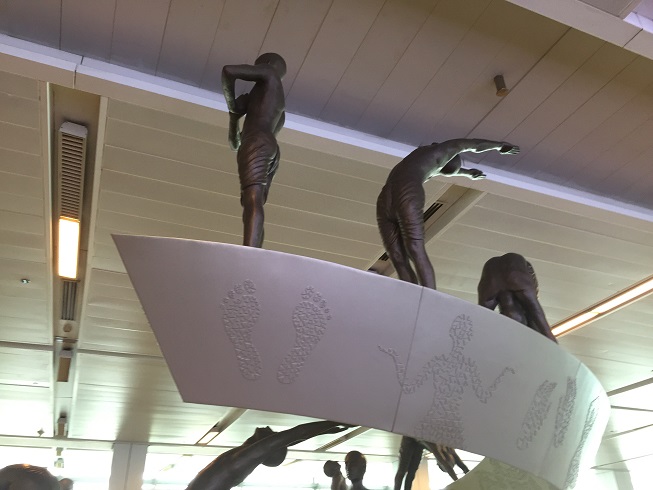
We had a little time before our plane took off so I walked through the airport only to find this amazing piece of sculpture.
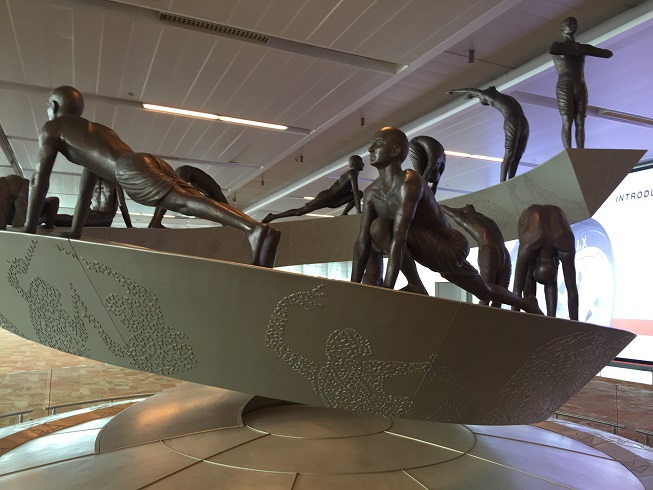
Surya Namaskar, the Salutation to the Sun, life-sized! It was magnificent.
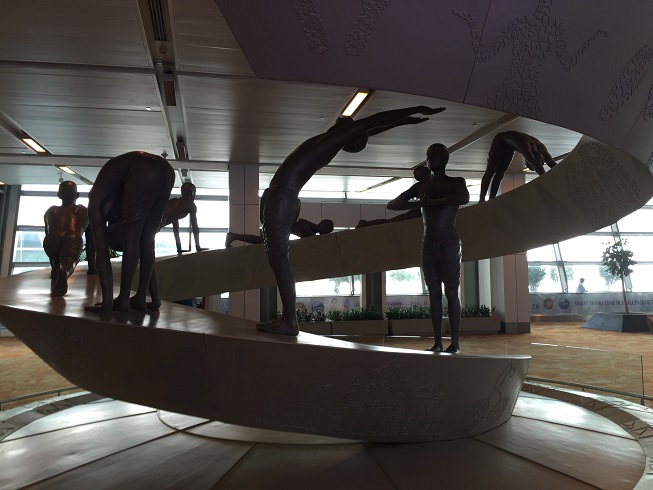
Surya Namaskar, a series of yogic postures means salutation to the sun. It finds its roots in worship of Surya, the Sun God. This sequence of activities and poses can be practiced as a complete “sadhana” which incorporates exercise postures, breathing exercises, and deep meditation. A complete sequence of these poses (known as ‘asana’) is completed with two sets of the twelve postures comprising of forward and backward stretch of the spine.
The Surya Namaskar holds equal benefits for the body and the intellect. Its practice results in a shapely and strong body encompassing a sharp and focused mind. Working out the routine at dawn, with controlled breathing, uplifts the mood and provides an invigorating start to the day. This alleviation of anxiety and stress grants a clear and alert mind that is capable of concentration and meditation which is the ultimate path to creating complete harmony of the spirit and the body.

It is not too long of a flight from Delhi to Varanasi and then onto Khajuraho, maybe a couple of hours.
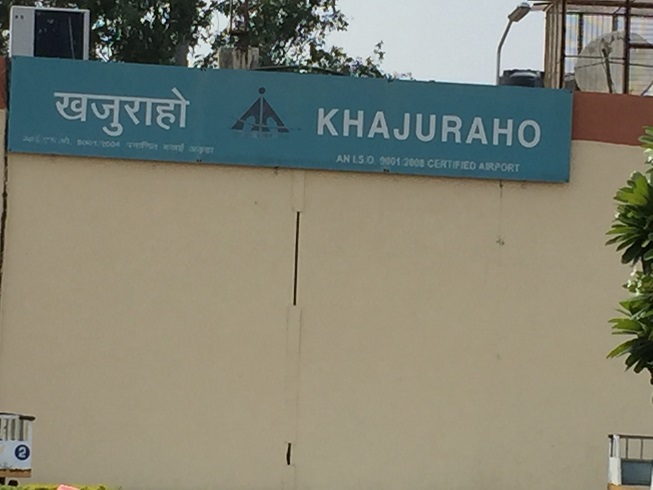
I was glad we had landed at the old airport, I hear there is a new one just getting ready to open.
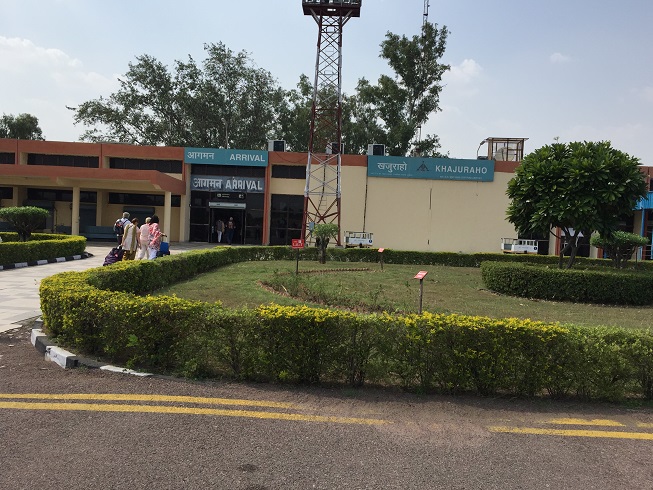
It was almost funny to see when we landed that many of the travelers on the plane were also coming to the Himalayan Institute, and many were from Dallas!
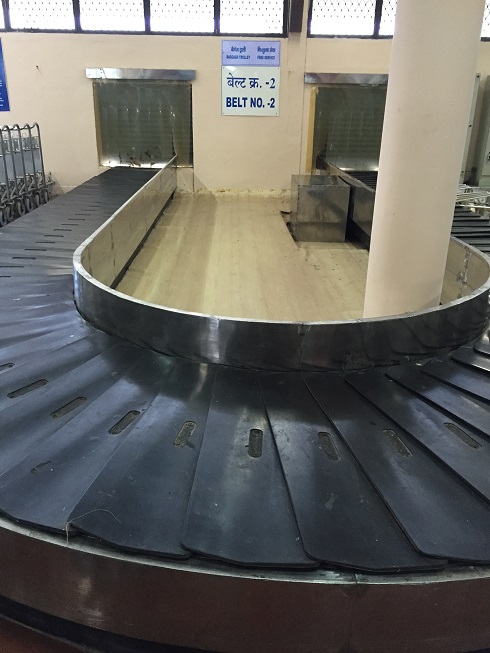
This was an incredibly small but very charming airport. I awaited by bag!
We are met by Joseph (our guide and a super fun and nice guy) who is waiting for us with a van that will take us to the Institute. After about a 1/2 hour ride through remoteness, seeing a lot of cows (many different kinds), goats, and wild hogs, we arrived.
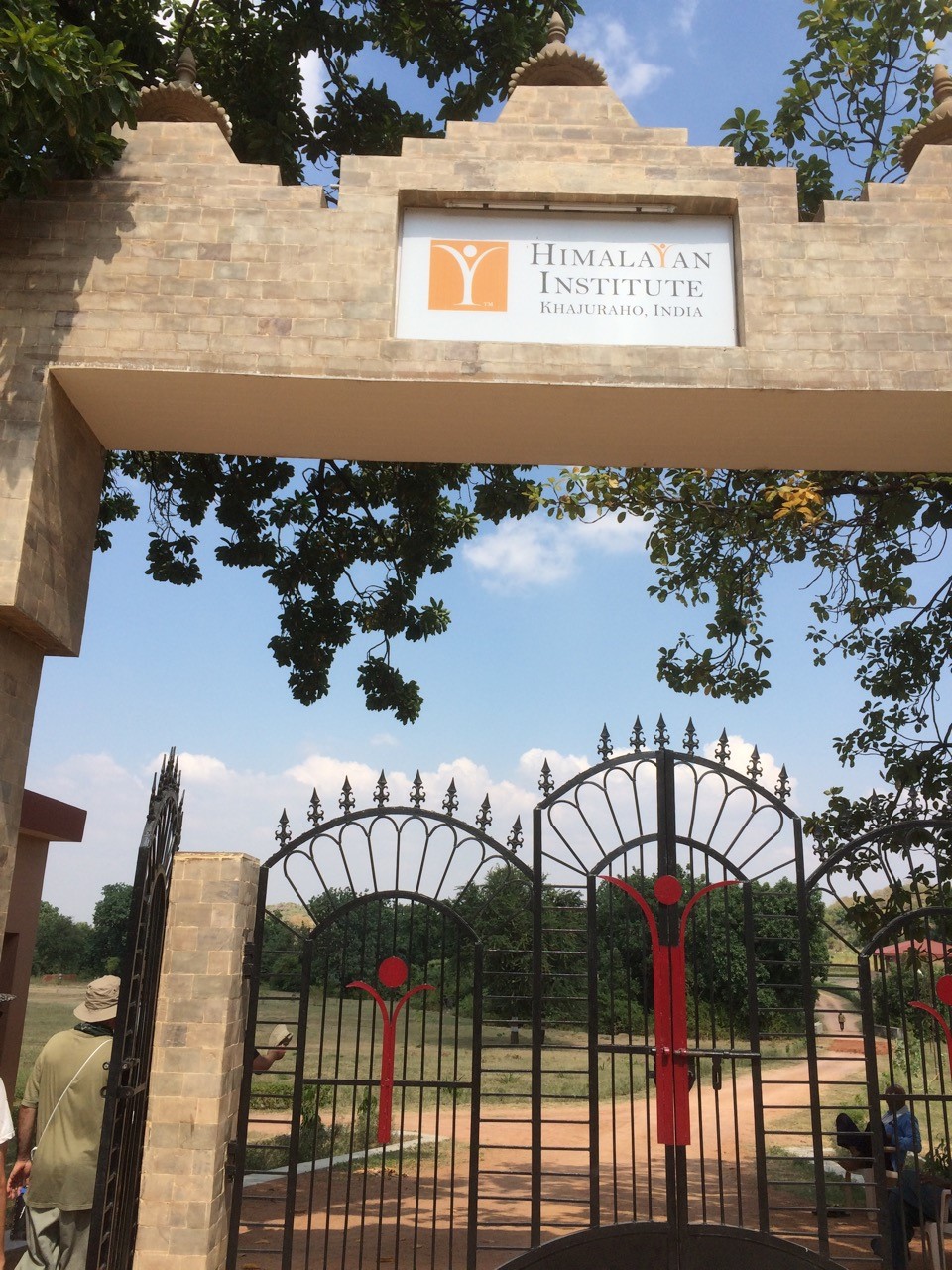
Just seeing the gates with the words Himalayan Institute gives you that feeling that you are home again. I wondered if one would have that feeling. The campus is small but very special. It sits between hills so that no matter which way you turn, you see hills.
I thought back on the advertisement for this emersion: “The Institute’s 30-acre campus is the ideal setting for sadhana. Surrounded by hills and forest preserves, it is blessed with natural beauty and tranquility. Here you will experience heaven on earth. The Sri Vidya Shrine awaits you in this idyllic setting. The shrine’s Sadhana Chamber and Maha Mandapa are open for daily meditation practice. The Garbha Griha, the innermost chamber of the shrine, is open during specific hours so you can pay your respects to the Sages of the Himalayan Tradition.”
Just like I thought, I had that same feeling I get at the Honesdale campus, just magnified (Those of you who have been there, know what I am talking about). I knew then that this experience was going to live up to its advertisement.
I am barely off the bus and I hear. “Hey Peggy”. It’s my friend Lea from Dallas who had attended the first session and is staying for the second session.
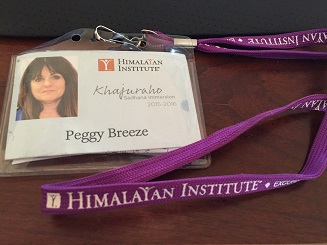
We agree to catch up later and then I am off to check in with Marge (cruise director extraordinaire) to receive my name tag,

schedule, and room assignment. Jane, along with a sweet little fire cracker from Hawaii, Ruby, were to be my roommates.
Once I have settled in the room, which was awesome by the way (I can’t believe I did not take a picture of it), I get out to look around.
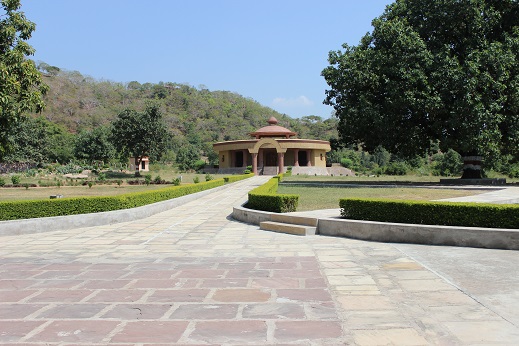
The campus consists of the main building that has the dining hall as well as guest rooms and offices, another building just for guests, the guesthouse; the Sri Vidya Shrine (shown above)
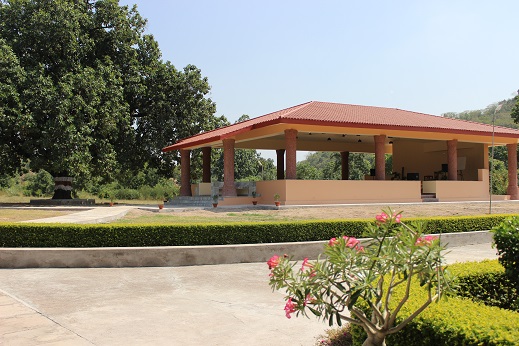
and a pavilion for gatherings and lectures. All of a sudden I hear BANG BANG BANG BANG BANG like some sort of dinner bell…. what is this all about? It is only 4pm. Well that banging of the spoon on the plate meant it was chai time. This soon became a beloved time of the day, 4pm, when we all gathered at the dining hall and enjoyed a wonderful cup of tea. After tea, I decide to take a look around.
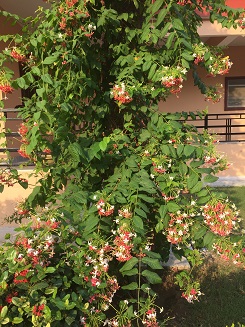
It didn’t take long to understand what “heaven on earth” meant. The campus is just beautiful.
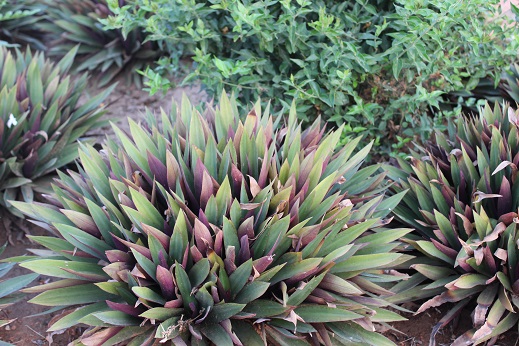
Many extraordinary plants live here. I think Meera (Panditji’s wife) had a hand in this as I believe her degree is in botany.
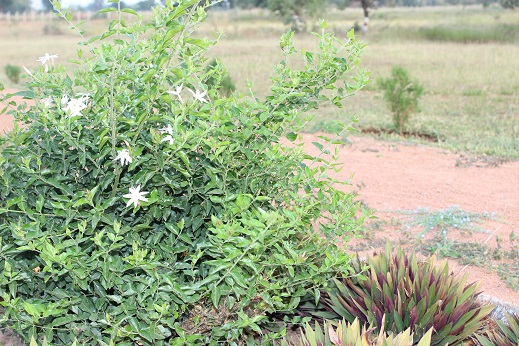
It is a very dry climate, so many of the plants were cactus plants
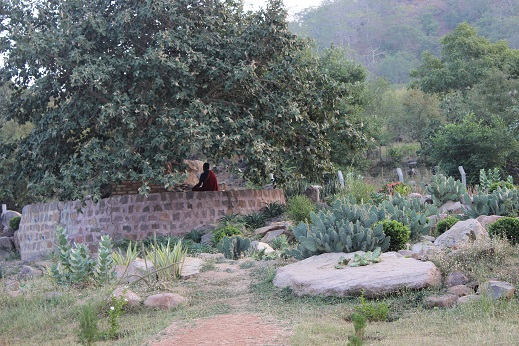
In fact, there is an entire cactus garden beneath the big banyan tree. Navin found a lovely place to mantra.
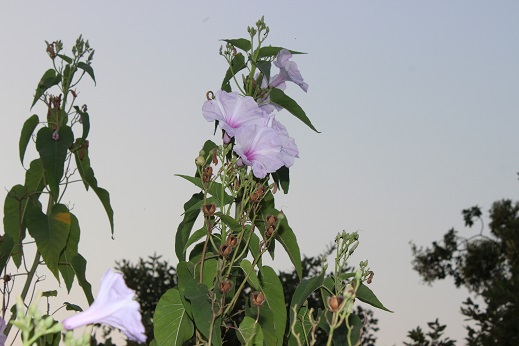
Many of the plants were blooming and fragrant
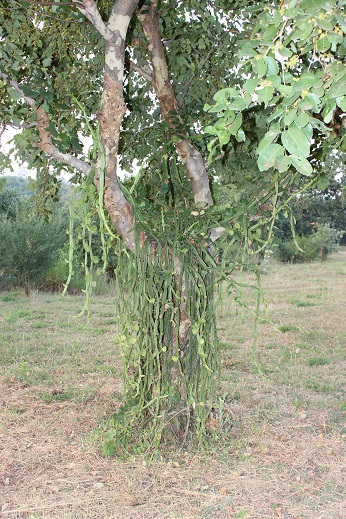
Some very interesting and beautiful trees
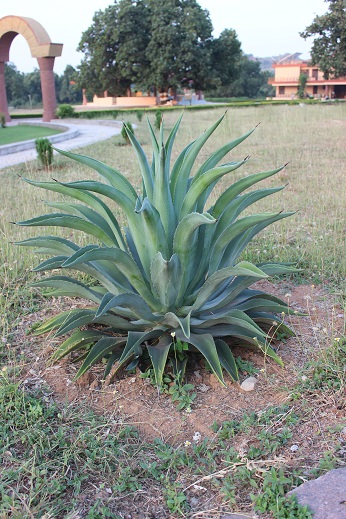
Each plant brought with it it’s own energy
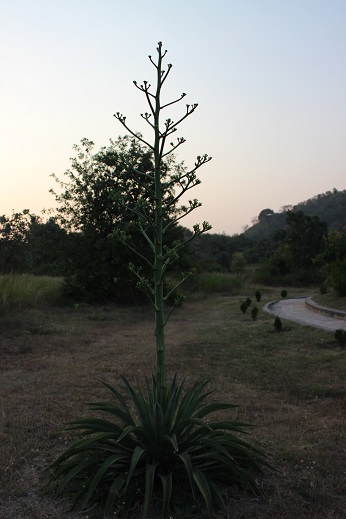
I don’t know what this plant was, but I found it fascinating.
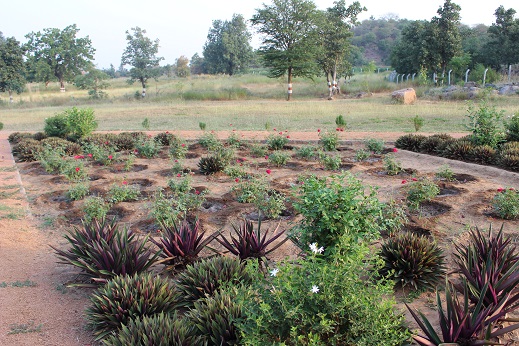
There is also a rose garden and as you can see, deep troughs surrounded each plant, hoping to hold water for just a little longer.
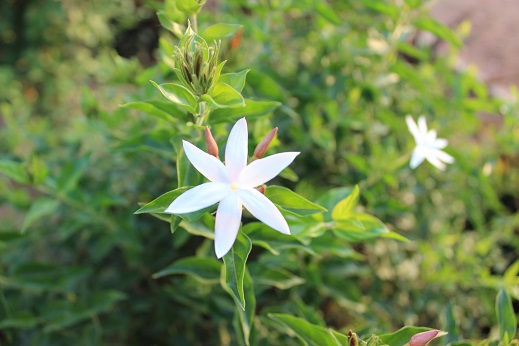
Beauty was everywhere
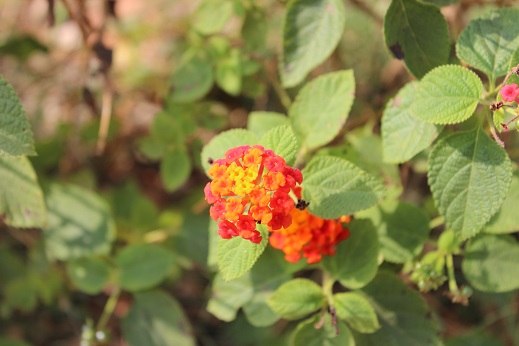
And you just couldn’t help but be moved.
Then it was dinner time. I have to say the food was awesome. All vegetarian and so healthy. I will always remember the cauiflower dish, the sugary pretzel things and the chai!
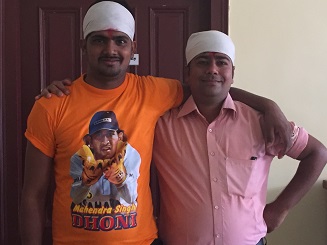
Every meal was different and it was always exciting to see what these two wonderful cooks had prepared for us each day.

After dinner we had our Opening session. Panditji talked a lot about the campus, and about the Shri Vidya Shrine. He told us about the program we were about to begin. It promised to teach us how our body is a shrine and we are a living light of Divinity. The unique focus of this intensive was on enabling us to discover the parallels between the emanations of our innate intelligence and the divine forces residing at the Sri Vidya Shrine.
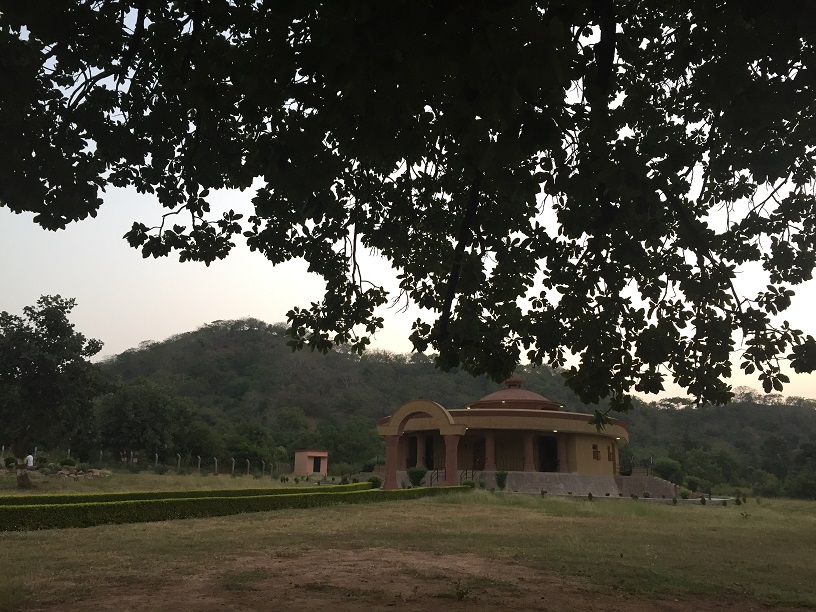
This space had been consecrated three years ago.
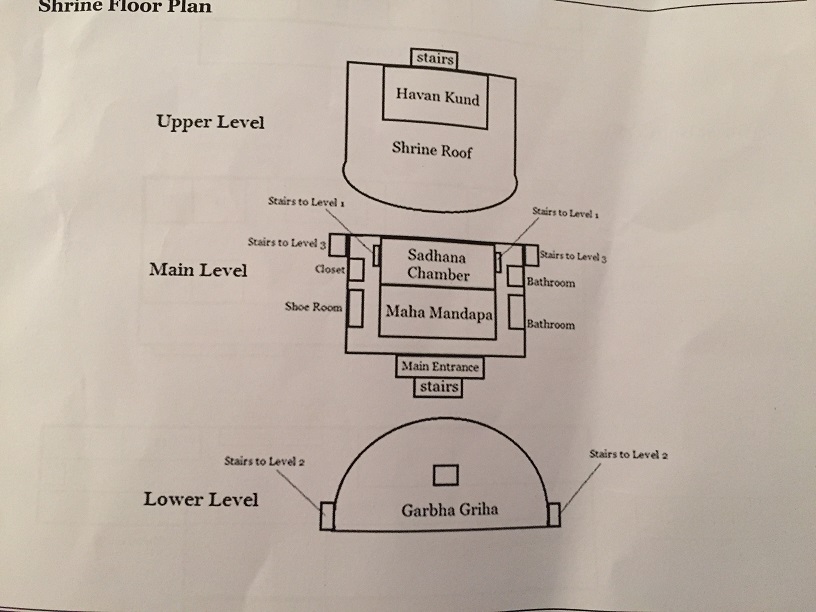
I was not familiar with “Shrine” architecture, so this floor plan helped me understand the layout of our Shrine. Let’s start with the main level. As you walk up the stairs the “main entrance” is called the mandapa. A mandapa in Indian architecture is a pillared outdoor hall or pavilion for public rituals. This mandapa served as a walkway and to the left was a closet where blankets and meditation pillows were available. There was also a rack to leave your shoes. If you went around to the right, there were two bathrooms.
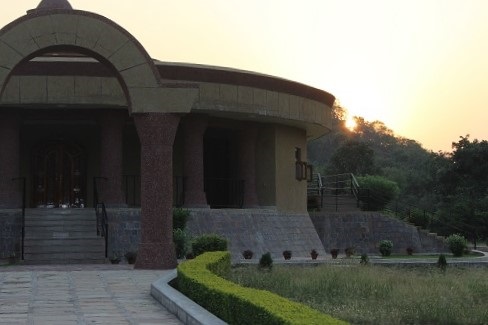
Behind the mandapa is the Maha mandapa. Maha mandapa is Sanskrit and means “Great hall”. It is the main assembly hall in the temple where devotees gather for ceremonies and which precedes the central shrine. We would gather here later in the week for prayer practice (in Sanskrit). Behind the Maha Mandapa was the Sadhana Chamber. Sadhana is a Sanskrit word meaning one of a number of spiritual practices or disciplines which lead to perfection, these being contemplation, asceticism, worship of a god, and correct living. This is where you could go to meditate in the Shrine (you could also do so in the Maha Mandapa and on the roof).
On the lower level of the shrine is the Garbha Griha. The Garbha Griha (cave) is the innermost chamber of the shrine. It is here that one pays respect to the Divine.
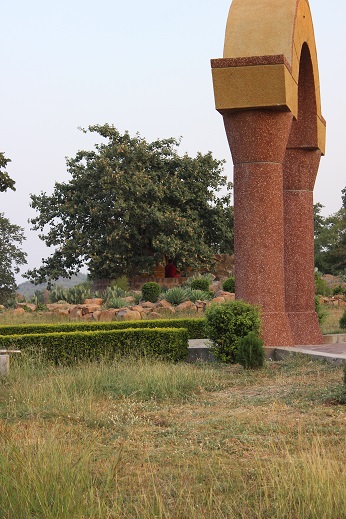
In front of the Shrine was this beautiful archway, welcoming you into the space.
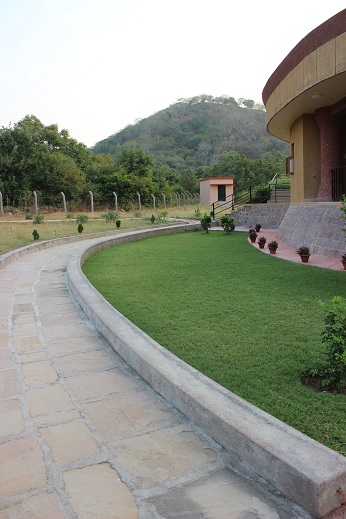
There was a path that led around the Shrine.
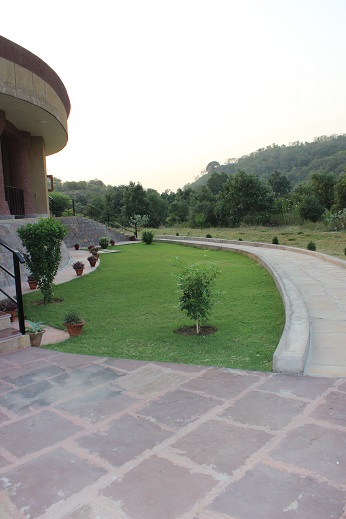
It is said that you should walk around a shrine before entering it. This practice is called, circumambulation. Circumambulation is done in a clockwise direction and in an odd rather than even number of times. Circumbulatory walking around the shrine, by keeping time, is a common form of Hindu prayer. The circumbulary pathway made of stone around the shrine is called the Pradakshina path.
On the backside of the shrine there is a set of stairs that leads to the roof, which quickly became one of my favorite places in this 30 acre retreat. Part of the roof was covered (over the coven or fire pit) and part was open. Up here I somehow felt I was a little closer to God.
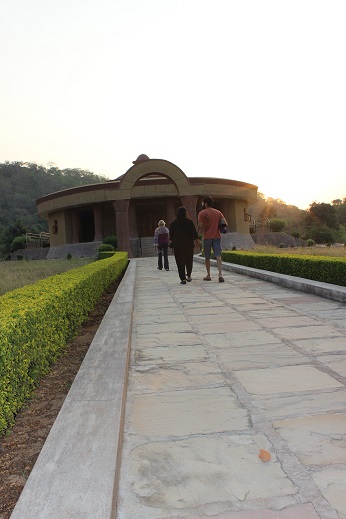
Every morning and every evening prayers were led by Panditji. It was a recording that was being played from the Sadhana Chamber, but the sound came up through the roof. It was loud and just awesome and you could feel the vibration of every word. I just sat there and absorbed.
After the session ended it was off to bed even though I was really excited for what the 2 weeks would bring. It was hard to fall asleep as it was really really hot (remember I am a Pitta) and I finally moved my bed under the fan. It was like sleeping under an airplane propeller but I thought it might be the only way I could get cool enough to sleep.
See what happens next…
Thanks for reading and sharing with your friends. Check me out at www.thebalancedyogi.com for all my blogs and info. I am also now expanding my schedule to offer more private one on one yoga and meditation lessons as well as private and corporate classes. You can also schedule an Ayurveda consultation by calling me at 972-658-1600. Let me know if you have an interest.
Blessings,
Peggy
